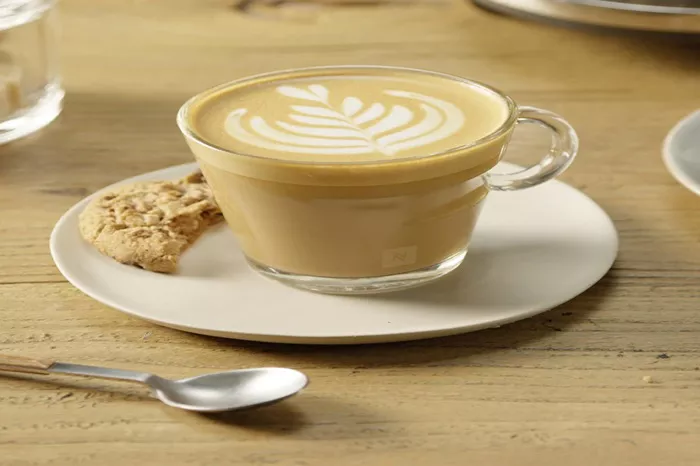A flat white is a popular coffee drink that has gained significant recognition in coffee culture, particularly for its smooth texture and balanced flavor profile. To understand which coffee drink is the closest to a flat white, it’s essential to first define what a flat white is and then compare it to other common coffee beverages. Below, we will explore the characteristics of a flat white and examine several coffee drinks with similar attributes.
What Is the Closest Coffee to a Flat White?
A flat white is typically composed of espresso and steamed milk, with an emphasis on a smooth and creamy texture. The key components that define a flat white are:
Espresso Shots: Generally, a flat white is made with a double shot of espresso, providing a strong and rich coffee flavor as the base of the drink.
Steamed Milk: The hallmark of a flat white is its microfoam. The milk is steamed to a velvety consistency, with minimal, almost invisible foam, ensuring a creamy texture. The microfoam should be smooth and integrated into the espresso, rather than sitting as a separate layer.
Milk-to-Espresso Ratio
The flat white has a roughly 1:1 milk-to-espresso ratio, meaning the milk volume is slightly more than the espresso, contributing to a harmonious balance. The milk should not dilute the espresso’s intensity but should instead enhance it, softening the drink without masking the coffee flavor.
Overall Taste Profile
The flat white offers a balanced taste, with the espresso’s bitterness complemented by the creamy smoothness of the milk. The result is a coffee that is not overly sweet, nor overwhelmingly bitter—just a perfect blend of both components.
Similar Coffee Drinks
Several coffee drinks share characteristics with a flat white. The following comparisons break down the key differences and similarities:
Latte: A latte is similar to a flat white but typically has a greater volume of milk. While a flat white features a relatively equal milk-to-espresso ratio, a latte often has more milk, which significantly dilutes the espresso’s intensity. Furthermore, a latte features more visible foam on top, which makes it airier and less creamy than a flat white.
Closest match: The latte is the closest in terms of milk-based texture and overall drink composition, but it will generally feel lighter due to the higher milk content.
Cappuccino: A cappuccino differs from a flat white in the proportion of foam. It has a larger volume of foamed milk, creating a much airier texture compared to the creamy, smooth microfoam of a flat white. Cappuccinos also have more frothiness and less integrated milk, which changes the mouthfeel.
Difference: While both drinks use espresso as the base, the cappuccino is less creamy and more airy, which makes it a less direct equivalent to a flat white.
Macchiato: A macchiato is at the opposite end of the spectrum from a flat white. It contains a single shot of espresso with just a small amount of steamed milk, typically leaving most of the drink’s flavor focused on the espresso itself. The milk-to-espresso ratio is very low, which results in a much stronger coffee flavor.
Difference: The macchiato offers a much more concentrated espresso taste and lacks the creamy texture of a flat white. It is ideal for those who prefer a more espresso-forward experience.
Breve: A breve is made with half-and-half (a mixture of equal parts cream and milk), rather than just milk. This creates a richer and creamier texture compared to the milk-based flat white, making the breve thicker and more indulgent.
Difference: The rich, creamier texture of a breve sets it apart from the lighter, smoother consistency of a flat white, although both share a relatively high milk content.
Long Black / Americano: If you are primarily interested in espresso flavor, a long black (similar to an Americano) may be a better option. This drink consists of espresso diluted with hot water, and it contains no milk at all. While it allows the full espresso flavor to shine, it lacks the creaminess and balanced taste of a flat white.
Difference: The long black or Americano does not contain milk, so it is quite distinct in terms of flavor and mouthfeel compared to a flat white, which integrates espresso and milk for a creamy experience.
Regional Variations of the Flat White
It’s important to note that the preparation of a flat white can vary slightly depending on the region. In some places, a flat white may contain a slightly higher or lower amount of milk, and the microfoam texture may vary in its degree of smoothness. For instance, in Australia or New Zealand, where the flat white originated, the drink tends to be served with minimal froth, focusing on the seamless blend of milk and espresso. In other regions, variations in the milk-steaming technique might result in a slightly different texture, but the essence of the flat white remains consistent: a creamy, balanced espresso experience.
Visual Aids
To further illustrate the differences, it is useful to look at the visual characteristics of these drinks. A flat white should have a smooth, integrated texture with almost no visible foam, while a latte will feature a slight layer of foam. The cappuccino will present a visibly frothy top, and the macchiato will appear with only a small dollop of milk on top of a dark espresso base.
Conclusion & Recommendation
If you are seeking a coffee that closely resembles the flat white, the latte is the most similar option in terms of its milk-based composition and balanced flavor. However, for those who prioritize a stronger espresso taste with minimal milk, the macchiato would be a better fit. For those who prefer a richer, creamier texture, the breve might be more appealing.
Ultimately, the “closest” coffee to a flat white depends on personal preference and which aspects of the flat white—whether it’s the milk texture, the espresso strength, or the overall balance—are most important to the drinker.
Related topics:


